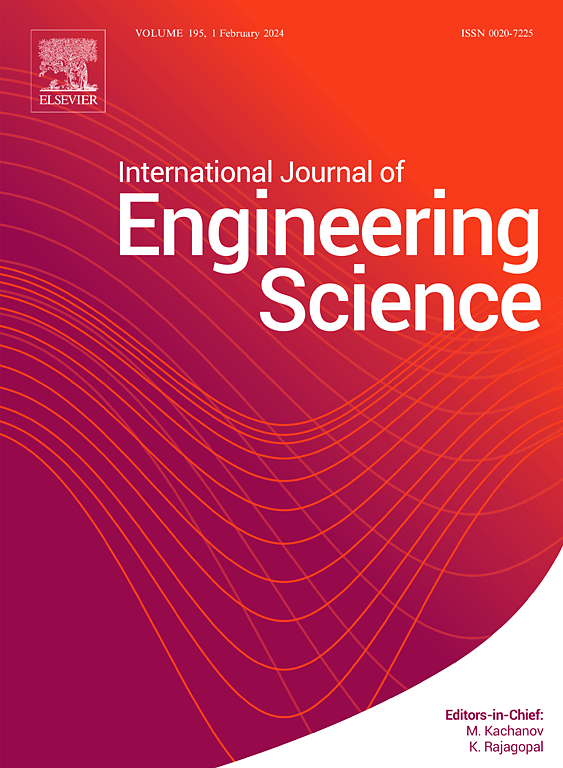尺度边界有限元法(SBFEM)对Lamb波色散曲线的实验验证
IF 5.7
1区 工程技术
Q1 ENGINEERING, MULTIDISCIPLINARY
International Journal of Engineering Science
Pub Date : 2025-09-16
DOI:10.1016/j.ijengsci.2025.104370
引用次数: 0
摘要
色散曲线是表征兰姆波传播的关键。估计这些曲线的一个关键挑战是确保计算效率和与实验结果的一致性,特别是在复杂的多层材料中。本研究针对双层结构,特别是粘弹性涂层的金属基底,采用缩放边界有限元法(SBFEM)生成色散曲线。SBFEM采用高阶光谱有限元和Gauss-Lobatto-Legendre (GLL)节点分布对波导截面进行离散化,为每层材料分配单个光谱单元。为了验证SBFEM曲线的有效性,将估计结果与金属板和由粘弹性涂层组成的钢基双层结构的实验数据进行了比较。数值预测与实验结果之间的强相关性表明了SBFEM在保持计算效率的同时准确捕获粘弹性涂层双层波导中兰姆波行为的有效性。这些发现加强了该方法在复杂、分层和耗散材料中波传播分析的适用性。本文章由计算机程序翻译,如有差异,请以英文原文为准。
Experimental validation of Lamb wave dispersion curves using the Scaled Boundary Finite Element Method (SBFEM)
Dispersion curves are essential for characterizing Lamb wave propagation. A key challenge in estimating these curves is ensuring both computational efficiency and agreement with experimental results, particularly in complex, multilayered materials. This study focuses on bilayer structures, specifically metallic substrates with viscoelastic coatings, and employs the Scaled Boundary Finite Element Method (SBFEM) to generate dispersion curves. SBFEM discretizes the waveguide cross-section using high-order spectral finite elements and a Gauss–Lobatto–Legendre (GLL) node distribution, assigning a single spectral element per material layer. To validate the SBFEM curves, estimation is compared with experimental data obtained from metallic plates and bilayer structures consisting of viscoelastic coatings on steel substrates. The strong correlation between numerical predictions and experimental results highlights the effectiveness of SBFEM in accurately capturing Lamb wave behavior in bilayer waveguides with viscoelastic coatings while maintaining computational efficiency. These findings reinforce the method’s applicability for the analysis of wave propagation in complex, layered, and dissipative materials.
求助全文
通过发布文献求助,成功后即可免费获取论文全文。
去求助
来源期刊

International Journal of Engineering Science
工程技术-工程:综合
CiteScore
11.80
自引率
16.70%
发文量
86
审稿时长
45 days
期刊介绍:
The International Journal of Engineering Science is not limited to a specific aspect of science and engineering but is instead devoted to a wide range of subfields in the engineering sciences. While it encourages a broad spectrum of contribution in the engineering sciences, its core interest lies in issues concerning material modeling and response. Articles of interdisciplinary nature are particularly welcome.
The primary goal of the new editors is to maintain high quality of publications. There will be a commitment to expediting the time taken for the publication of the papers. The articles that are sent for reviews will have names of the authors deleted with a view towards enhancing the objectivity and fairness of the review process.
Articles that are devoted to the purely mathematical aspects without a discussion of the physical implications of the results or the consideration of specific examples are discouraged. Articles concerning material science should not be limited merely to a description and recording of observations but should contain theoretical or quantitative discussion of the results.
 求助内容:
求助内容: 应助结果提醒方式:
应助结果提醒方式:


